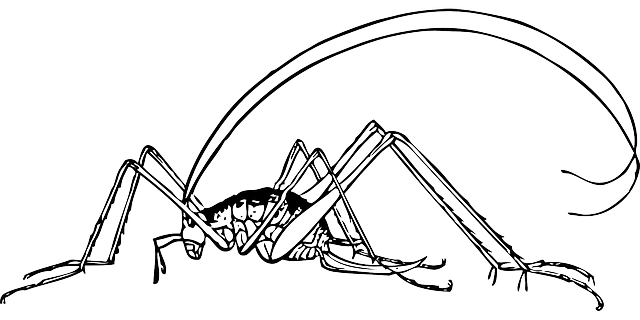Crickets can be one of the frustrating and damaging pests to infest homes and buildings. To avoid a larger infestation and dispel these pests, it’s important to identify the signs of an infestation early and address the issue in a timely manner. Here are the signs you need to be aware of if you suspect you have a cricket infestation.
Signs of a Cricket Infestation
Chirping Sounds
One of the most obvious signs of a cricket infestation is the sound of chirping. Male crickets make the telltale chirp call to attract female crickets and a large infestation can produce a significant amount of sound. The chirping sounds is often heard the most at night as temperature start to drop and crickets are most active.
Visible Sightings
Crickets like living in dark and moist areas, such as basements and closets. If you catch a glimpse of a cricket, regardless of size, this may be an indication to a potential infestation.
Droppings
Crickets leave behind an accumulation of tiny black droppings, ranging from 0.125” to 0.25”. These droppings can stain furniture, carpets, walls and clothing. The droppings should be a sign of alarm as a cricket infestation may be looming.
Skin Shedding
Crickets shed their skin at least once in their life cycle. The shed skin can indicate the presence of an infestation. The shedding of the skin is necessary to help crickets grow and develop into adulthood.
Egg Deposits
Female crickets can lay eggs in any warm, damp environment. To ensure a healthy reproduction rate, female crickets will try to lay eggs in an environment with abundant food, such as vegetation or organic matter. When crickets lay eggs in substrates like wood, clay pots, and fabric, this could signal an infestation.
Visible Damage
Crickets can cause significant damage to the structure of a home if the infestation isn’t addressed in a timely manner. They bore through surfaces such as wood, cloth, and other materials in order to create nesting areas or escape from predators or water.
People Also Ask
How do you get rid of a cricket infestation?
Removing an cricket infestation requires you to eliminate the crickets and their food sources. This can be achieved by sealing crack and crevices in and around your home, emptying standing water, reducing clutter and eliminating food sources. A pest control professional can provide additional control methods and advice to help eliminate the infestation quickly.
How long do crickets live?
Most crickets live for up to 8 weeks. However, any environmental factor can impact the lifespan of a cricket, including high temperatures and lack of food.
How much damage can crickets cause?
Crickets can cause significant damage to the structure of a home if the infestation isn’t addressed in a timely manner. They bore through surfaces such as wood, cloth, and other materials in order to create nesting areas or escape from predators or water.
What do crickets like to eat?
Cricket diets consist of a variety of foods such as fruits, vegetables, fungi, decaying matter and other insects.
Do crickets bite humans?
Crickets do not typically bite humans; however, they can pinch if held in between fingers.
Final Words
Crickets can cause a lot of frustration and damage so it is important to be aware of the signs of an infestation. If you suspect that a cricket infestation is present in your home, you should get a professional inspection to determine the best course of action. Taking steps to eliminate a cricket infestation can help reduce their numbers and restore your home back to its former state.

